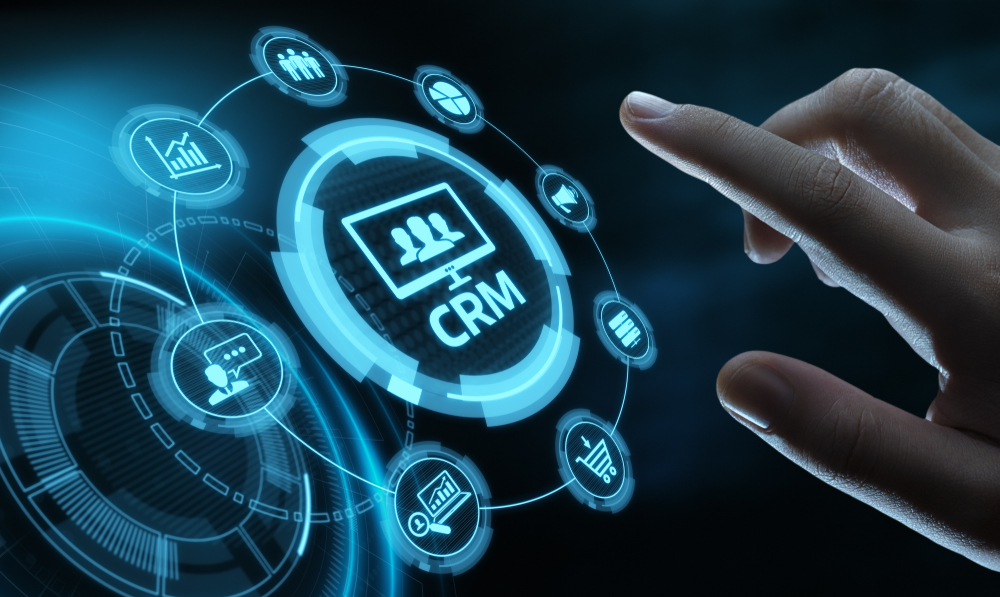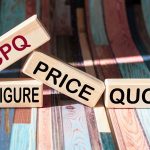
In competitive manufacturing sectors, success relies not only on product quality and lead times but also on effective sales management and customer relationships. This rings especially true for custom furniture, cabinet, door, and window manufacturers. ERP CRM integration helps with your sales and customer service plans to boost sales and ensure customer retention.
Obstacles That Hurt Sales and Customer Retention
Consider how a typical sale unfolds for a door or window manufacturer. A homeowner visits a showroom, flips through catalogs, and chooses their preferred design. The dealer carefully notes down the details, enters them into a quoting tool, and sends the estimate. After approval, the order moves into production, then to delivery and installation.
While this process often works, without ERP CRM integration, it leaves plenty of room for issues or missed opportunities to arise. If a quote takes too long, customers may assume the company is disorganized. If communication breaks down during production, customers may not know if or when the product will arrive. And once the job is complete, many manufacturers simply move on to the next sale without system triggers for follow-up.
Even with the best intentions, many manufacturers face obstacles that hurt sales and retention:
-
Slow or inconsistent quoting: Customizing cabinetry, doors, and windows often involves many variables. If the quote turnaround is slow (or inaccurate), prospects may get fed up and go elsewhere.
-
Lack of follow-up: After installation or delivery, issues may arise with a customer’s order. If there is no process to check back, small issues fester, perhaps turning a happy customer into a dissatisfied one.
-
Poor visibility into order status: Customers like to know when their items will be delivered, and if delays happen. If the sales or customer service teams can’t see production/delivery status because the data is stuck in the ERP and has not surfaced in the CRM, customers become frustrated.
-
Inadequate cross-sell/upsell efforts: Maybe there are obvious sales opportunities, including a regional discount or free upgrades on additional windows if purchased within a year. But without ERP CRM integration that makes customer history and tracking visible, these opportunities may be missed.

-
Data duplication, errors, and manual reconciliations: Two people entering the same customer or order data into different systems wastes time. Shipment delays may occur because materials weren’t available. And invoices could include incorrect pricing, causing customer frustration. Not only can these situations impact the order, but they could also cost you a sale and hurt your customer retention rate.
-
Inability to segment customers or personalize communication: Sending all customers generic messages, rather than tailored offers, is amateurish and could hurt retention.
All of these scenarios can be avoided by utilizing an ERP system with integrated CRM, allowing sales and customer satisfaction ratings to climb.
How ERP CRM Integration Helps Sales and Customer Retention
Enterprise Resource Planning (ERP) and Customer Relationship Management (CRM) systems are powerful tools for efficient business operations and communication. Integrating your CRM and ERP systems creates a single, connected system where sales and operations share the same data. This allows manufacturers to stay engaged with customers at every stage.
Picture this: A furniture manufacturer sells a dining table. Six months later, the CRM triggers a reminder that customers who purchase dining tables often return for companion pieces. With integration, the sales rep can see the customer’s order history in the ERP, confirm production timelines, and send a personalized offer. Instead of being forgotten, the customer feels valued and supported.
In addition, integration provides benefits like faster quoting, fewer data errors, and more accurate forecasting. These all help improve the customer’s experience while strengthening the manufacturer’s bottom line.
What an Effective Retention / Follow-Up Sales Process Looks Like
Let’s walk through a simple example of how a manufacturer might structure follow-ups and retention using CRM ERP integration.
| Stage | Process | Tools / Data Needed | Benefit |
|---|---|---|---|
| Order Completion & Installation | Once delivered/installed, send the customer a “How did we do?” survey or call to check for issues (gaps in finish, alignments, etc.). | Set an event trigger for a follow-up task to confirm the order is marked delivered/installed. | Catches small issues early, builds trust, and reduces returns/complaints. |
| Warranty Reminder | One year later (or based on product), send a reminder about a warranty check, or an offer for maintenance, hardware, or refinishing. | ERP CRM connects to field service management and includes product type, warranty terms, and customer history. | Regular customer communication shows care, encourages repeat purchase, and keeps the brand top‐of‐mind. |
| Cross-Sell / New Product Offers | If a customer bought kitchen cabinets, send offers of bathroom or outdoor cabinetry when launching seasonal items or new product lines. | Pull the customer’s complete sales history from ERP and then execute targeted marketing campaigns via CRM. | Cross-selling typically increases average order value. While new product offers lead to additional orders. |
| Periodic Engagement | Send a digital newsletter that includes design trends and seasonal maintenance tips (e.g., sealing wood, protecting finishes), and servicing options. | Use the customer’s ERP order history to tailor CRM campaigns and tracking for the best results. | Engagement keeps the relationship alive and increases the chance of referrals or repeat jobs. |
| Feedback / Referral Loop | A structured follow-up does not need to be complicated, but it must be intentional. Ask for referrals, testimonials after successful jobs, and respond to negative feedback swiftly. | Logs in CRM, order/product data in ERP, customer satisfaction metrics | Small gestures like reminders, satisfaction checks, or timely offers can build reputation and lead to repeat business and referrals. |
How Frontier ERP Helps with Sales and Customer Retention
Frontier ERP contains CRM functionality designed with manufacturers in mind, offering tools that directly address common sales and retention challenges.
Accurate, Fast Quoting
Frontier’s built-in CPQ software utilizes a parametric product configurator and integrated pricing tools. This allows sales teams to provide quotes that reflect real-time costs, available materials, and production capacity. Customers receive answers quickly, without back-and-forth delays.
Clear Order Visibility
Frontier connects sales and operations so customer service teams can access real-time updates on production and delivery. Customers no longer need to wait for callbacks or risk being left in the dark.
 Automated Follow-ups
Automated Follow-ups
With built-in scheduling and reminders, Frontier ensures customers receive timely outreach for satisfaction checks, warranty notifications, and new product announcements.
Single Source of Truth
Frontier’s centralized database eliminates the need for double entry, reducing errors in orders, invoices, and shipping. This creates a smoother experience for the customer and saves valuable time internally.
Smarter Customer Insights
Order history, preferences, and margin data allow manufacturers to identify upsell opportunities and tailor marketing to the right audience at the right time.
Improved Planning
Frontier’s forecasting tools help align sales expectations with production capacity, ensuring products are ready when customers need them.
With these ERP CRM integration capabilities, manufacturers can transform their sales processes from reactive to proactive, strengthening customer retention while driving new revenue growth.
Don’t Miss Your Piece of the Pie
In 2024, the overall home improvement market expanded to $574.3 billion and is projected to grow by another ~3.4% in 2025, with continued opportunities among contractors, manufacturers, and suppliers. In industries where custom jobs are common and competition is strong, those missed moments can make the difference between retaining a customer for years or losing them forever.
Conclusion
ERP CRM integration is more than a software upgrade—it is a strategy for long-term success. Manufacturers that rely on disconnected systems risk slow quotes, missed opportunities, and lost customers. Those that integrate CRM with ERP create faster, more accurate sales cycles and ongoing relationships that drive repeat business.
Frontier ERP provides the tools to make this possible. By combining sales data with production, inventory, and finance, it empowers manufacturers to deliver better service, strengthen retention, and build profitability. In a competitive market, that can make all the difference between being forgotten and being chosen again and again.
If you would like to learn more about our CRM capabilities or have additional Frontier ERP questions, click below.



 Automated Follow-ups
Automated Follow-ups

